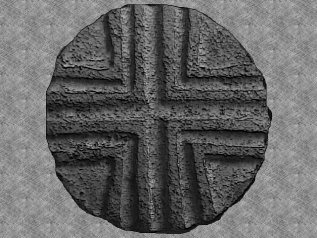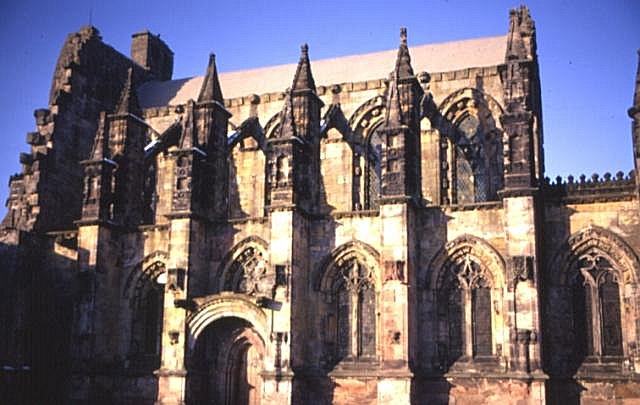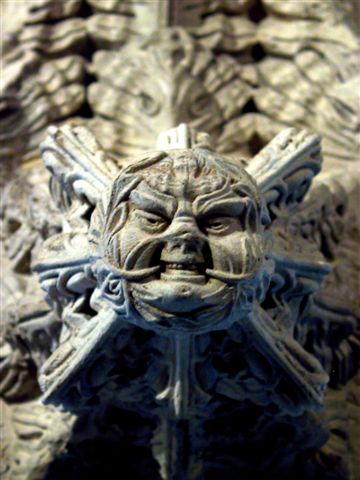Church reformers were determined to stop men whose hands had been stained with blood from touching holy things.
And so the popes conceived the idea of feudal knights into a militia of Saint Peter that was to be controlled by the clergy. However, the Templar Knights were more of a revival of medieval principles.
With the pressures of the church for a perfect Christian Knighthood, blood was only meant to be shed in the name of a glorious reward for slaying the foe. The Soldiers of Christ would kill swiftly, would serve his interests in dying, and Christs interests in killing.
A contradiction at best where those that protected the word of God would be restricted from holy things, yet when that word was challenged it was met by Christs Soldiers who had no protection themselves.
The leader of the Templars, Hugues de Payns assured the Templars that they were not killing with greed in mind. They were punishing the unjust and unbelievers, seizing the booty that was streaked in sin. During this time and under Payns rule, most of the Templars time was spent plundering.
It's possible that the intentions of Payn and his knights were to retreat into a monastery, or perhaps found a lay confraternity comparable to the hospice of Saint John that had been founded by the merchants of Amalfi to care for pilgrims before the first crusade. ~Piers Paul ReadBrief History of the Templar Order Courtesy of Nights Templar Vault
The Knights Templar Fortifications
The Templars erected many buildings in the west including preceptories, churches, and granges for administration purposes. They were simplistic and utilitarian in form with of course a few exceptions. There was no dictated form of Templar church architecture.
Over the years, misconceptions about the circular construction of temples in Paris have led people to believe that every circular building was constructed by the Templars. However, that was not the case.
Furthermore, the Templars did not the believe that money should be spent on elaborate church construction and ornate accessories. Furthermore, allowing the construction of overblown and over indulgent European castles would only be an economic liability.
 Ancient Digger says in 1099, Jerusalem was captured by the crusaders and instead of the complete destruction of Solomons temple, it was turned into a royal palace for the crusaders. In 1119, the temple was turned into the main headquarters for the Knights Templar. Read More about the Mysterious and Mystical Templar Castles, Churches, and Fortresses
Ancient Digger says in 1099, Jerusalem was captured by the crusaders and instead of the complete destruction of Solomons temple, it was turned into a royal palace for the crusaders. In 1119, the temple was turned into the main headquarters for the Knights Templar. Read More about the Mysterious and Mystical Templar Castles, Churches, and Fortresses

Francois Hagnere says "On the road of Santiago de Compostella, the Knights Templar founded a commandery with a frescoed chapel between 1150 and 1160. The place was chosen by the monks-soldiers because a well was located here with the particularity of never getting dry. " Read more about The Knights Templar Fabulous Chapel in Cressac
 This photograph is of a Masonic Knights Templar symbol showing a cross within a crown inside a Maltese cross, which has the Latin phrase, “in hoc signo vinces.” The phrase means “in this sign you shall conquer” and was used by Constantine as a military motto in the early 4th Century.
This photograph is of a Masonic Knights Templar symbol showing a cross within a crown inside a Maltese cross, which has the Latin phrase, “in hoc signo vinces.” The phrase means “in this sign you shall conquer” and was used by Constantine as a military motto in the early 4th Century.Joe Beine’s photographs on Flickr.
Related Articles:
Symbols
The Master of the Knights Templar's great seal was double-sided and showed the picture of The Dome of the Rock on one side and the Order's symbol of two knights on one horse on the other side.There was also a smaller, single-sided seal, which showed the Dome of the Rock (or the circular dome of the Holy Sepulchre).
A different symbol was adopted by each and every Grand Master. In addition, these seals were kept under close watch, often locked in a compartment that could only be opened by a small number of people. The Grand Master and his highest two officials were the only holders of the keys.
 Used on the Seal of Etienne de Til-Chatel, lord of Pichanges, Preceptor of La Fontenotte. Representation of a dove, facing backwards and grasping an olive branch within its beak.
Used on the Seal of Etienne de Til-Chatel, lord of Pichanges, Preceptor of La Fontenotte. Representation of a dove, facing backwards and grasping an olive branch within its beak. From Hugues de Payens period. Hand carved Grand Seal. Alike wax imprints were found on official documents addressed to Hugues de Payens.
From Hugues de Payens period. Hand carved Grand Seal. Alike wax imprints were found on official documents addressed to Hugues de Payens.Royston Cave
The carvings in the cave include four saints known to have been revered by the Templars. Below the original entrance is St. Christopher, patron saint of travellers, with the child Jesus on his shoulder and staff in hand. Moving to the left high up on the west part of the wall is St. Katherine for whom the Templars had a special regard as it was on St. Katherine's day in 1177 that they had a notable victory over the Saracen Saladin. Farther to the left is St. Lawrence who was martyred on the gridiron.Rosslyn Chapel
However, as documented by St. Clairs, the symbols did not appear until the late 1800's when restoration work took place instructed by Edinburgh architect David Bryce, a known Freemason.
The connection of the symbols for the Templars and the Masons has always been under scrutiny, however scholars depend on history, and history makes it clear that their was so connection between the two orders. Although, the carvings in the chapel display the Masons as direct descendants of the Templars, which may tell another story.
Legends and Myths
Many of the Templar legends are associated with the Order's early occupation of the Temple Mount in Jerusalem and speculation about what relics the Templars may have found there, such as the Holy Grail or the Ark of the Covenant. These relics have often been portrayed in Hollywood Blockbusters like "National Treasure" and the 'Da Vinci Code".During the Templar trials, a relic came under fire being described as cat, a bearded head, or in some cases as Baphomet.
This accusation of idol worship levied against the Templars has also led to the modern belief by some that the Templars practiced witchcraft. However, modern scholars generally explain the name Baphomet from the trial documents as simply a French misspelling of the name Mahomet (Muhammad).
 Patrick Bernauw says "the Story of the Grail was the earliest account of the Quest for the Holy Grail, telling us about Perceval who was raised by his mother in a Welsh forest. When the boy encounters some knights, he realizes he wants to be one. He travels to the court of King Arthur and in his knight’s armour, he sets out for adventure." Read More about Perceval and the Grail of Bruges: By Chrétien De Troyes
Patrick Bernauw says "the Story of the Grail was the earliest account of the Quest for the Holy Grail, telling us about Perceval who was raised by his mother in a Welsh forest. When the boy encounters some knights, he realizes he wants to be one. He travels to the court of King Arthur and in his knight’s armour, he sets out for adventure." Read More about Perceval and the Grail of Bruges: By Chrétien De Troyes











5 Comments:
I like this post, your detail is great right down to the seal used by the head Templar. Good photos also.
Rhett Out
When we were in London last year, we made our upteenth visit to Temple Church.
The original 12th century Templar structure has been incorporated into a much larger 19th & 20th century church building, but the historic circle is still very much in evidence.
And, because London's lawyers rented the property after the dissolution of the Templar Knights, the Templar name lives on in the Temple Bar, and the Inner and Middle Temple of the Britsih legal system.
Great post btw!
I have been interested in the Knights Templar for awhile now, but I really only know small tidbits of information. This post has increased my interest and my knowledge greatly.
@Rhett
Thanks so much. This was a great subject. so much information, yet so many inconsistencies.
@DL
You are so lucky, I would have loved to see that.
I'm a barrister, and a member of the Honourable Society of the Middle Temple.
Very little of the Temple Church is 19th or 20th century, though.
Post a Comment
We appreciate comments, but we delete SPAM.